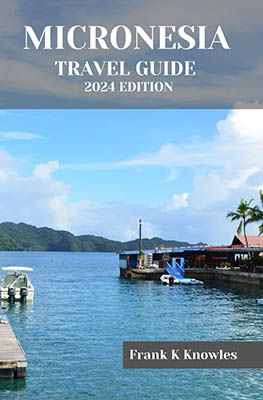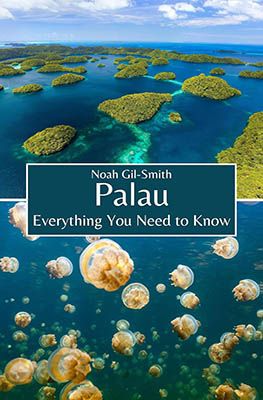Tropical Christmas celebration on Kosrae
Tropical Christmas celebration on Kosrae
On the island of Kosrae in Micronesia, Christmas is celebrated in a way that is unique in the world. This special celebration combines Christian traditions with local customs, resulting in a particularly colourful and lively spectacle. We witnessed some of the marches outside on the street and in the church square. In between, we sat in the church to continue marvelling at all the vibrant colours. It became the most extraordinary Christmas celebration of our lives. An event never to be forgotten!
In this blog ...
- Christmas marches: The highlight of the Christmas celebration on Kosrae
- Church and community
- Festive meals and traditions during the Christmas celebration on Kosrae
- Not every year a grand Christmas celebration on Kosrae
- What else is there to see and experience on Kosrae?
- Answers to practical questions about Kosrae
- Other topics you may be interested in
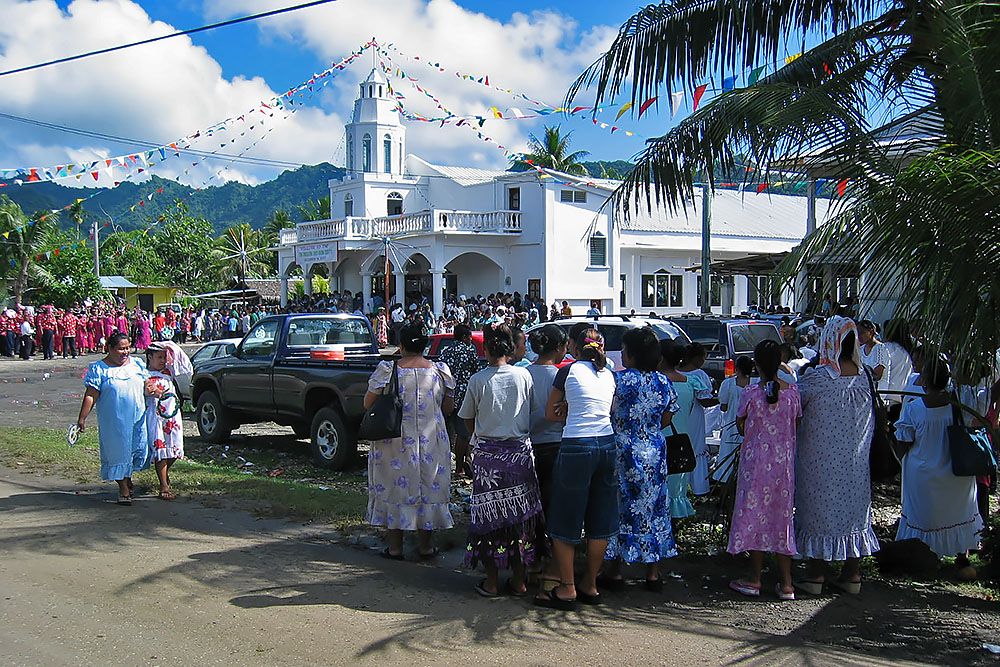
Christmas marches: The highlight of the Christmas celebration on Kosrae
The Christmas festivities on Kosrae begin as early as 1 November. The islanders start their rehearsals for the hymns and marches then. The marches subsequently take place on Christmas Day. From early morning until late evening, Christmas march participants gather at the beautiful 150-year-old congregational church in Lelu.
Dressed in colourful outfits, often in the colours of their village, the participants perform intricate marching routines. They sing Christmas carols as they move through the streets. During such a march, a group of people dressed in the same colours forms letters and words. Each village forms several groups, so in total you get to see a particularly large number of groups. This creates a lively spectacle of colour and sound.
The marches are not only a celebration but also a competition. Various groups compete for the best performance.
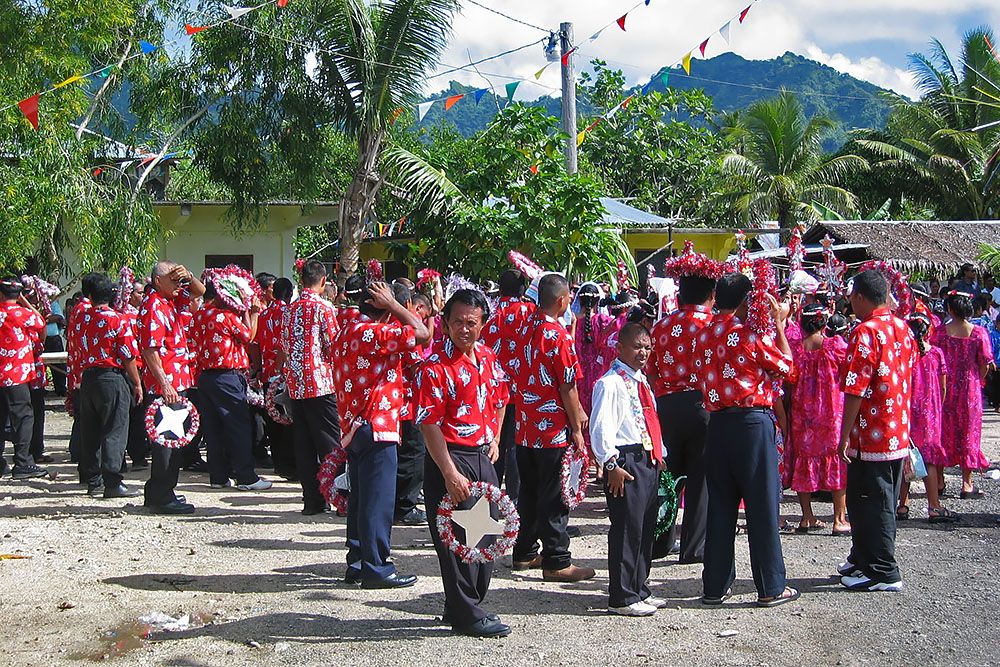
Church and community
The church plays a central role in the Kosraean Christmas celebration. Families come together for special Christmas services, which often last all day. Children perform plays depicting the Christmas story, complete with a real baby in the role of Jesus. These performances are a beloved part of the celebration and demonstrate the strong bonds within the community.
After the service, a special gift-giving takes place. In a unique twist on the Santa Claus tradition, the church deacons take on the role of Father Christmas and distribute gifts to the churchgoers. This moment of generosity and joy strengthens community ties and emphasises the spirit of giving during the Christmas period.
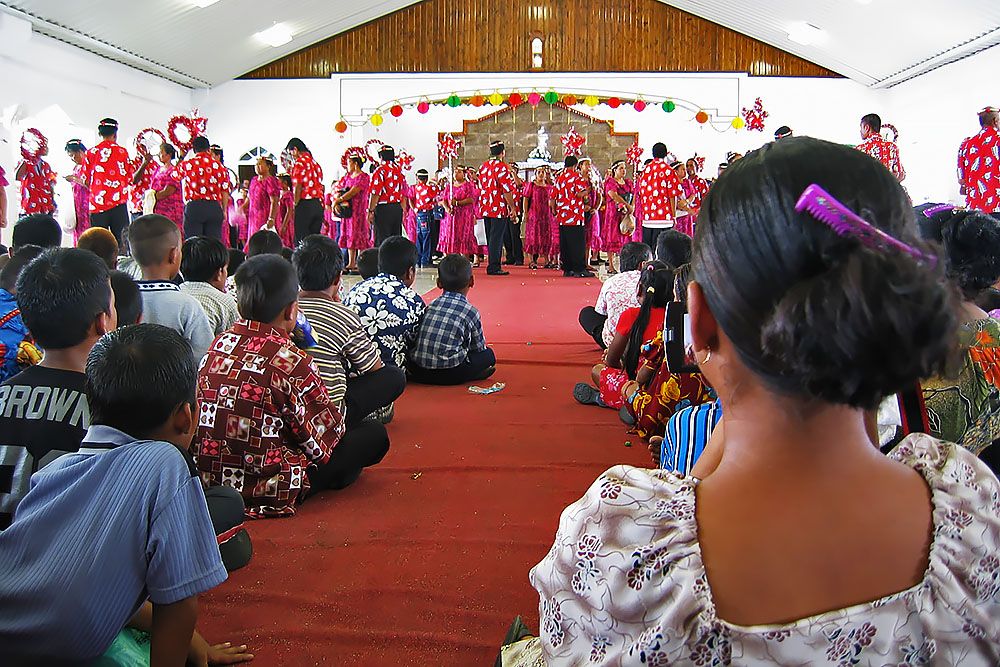
Festive meals and traditions during the Christmas celebration on Kosrae
As with many Christmas celebrations worldwide, food plays an important role in the Kosraean Christmas tradition. Families come together to prepare and share elaborate meals. Traditional dishes such as ‘umw’ (dishes baked in the ground) and dishes made from taro and breadfruit are often found on the Christmas table. These meals are not only tasty but also a way to pass on cultural traditions to younger generations.
The Christmas idea of eating together applies not only to the residents. As visitors, we too were presented with a plastic plate of delicious food. However, we did pass on the fly-covered pork fat from the many pigs on the spit.
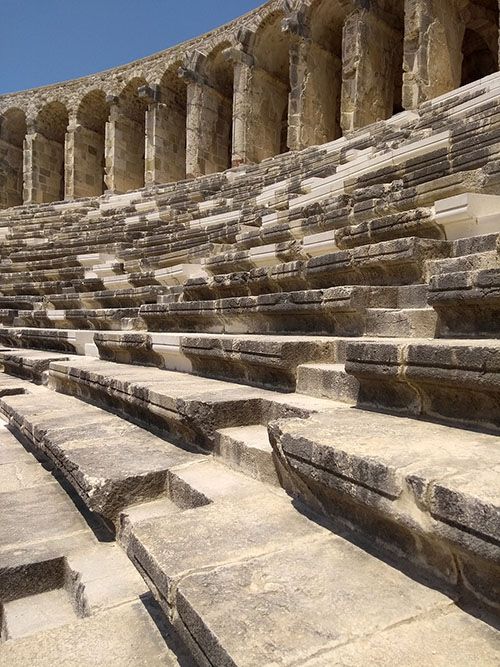
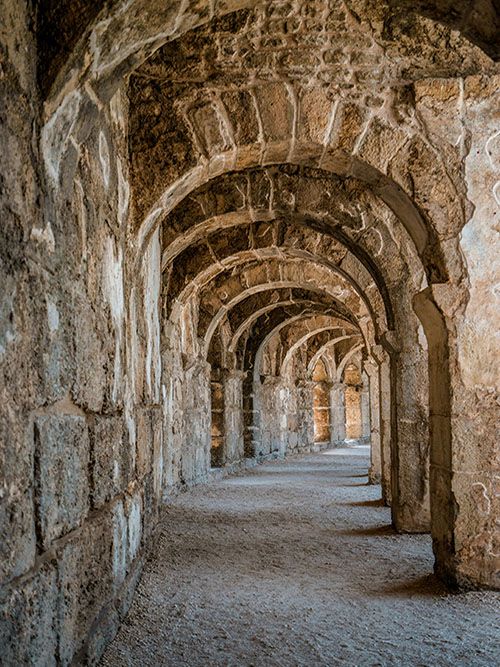
Not every year a grand Christmas celebration on Kosrae
Many Kosraeans live abroad for work. Because the Christmas celebration on Kosrae is so special for them too, they prefer to return to their island for it. However, the frequency with which they do this varies greatly. It will be more of an occasional event – perhaps every few years – rather than an annual tradition for most. This is due to the considerable costs and logistical challenges of travelling to this remote island in the Pacific Ocean.
Some Kosraean communities, especially those on Guam, Hawaii and the American mainland, return more frequently. Sometimes every few years. For many, however, the journey home is a one-time event, often coinciding with major family celebrations or important community gatherings.
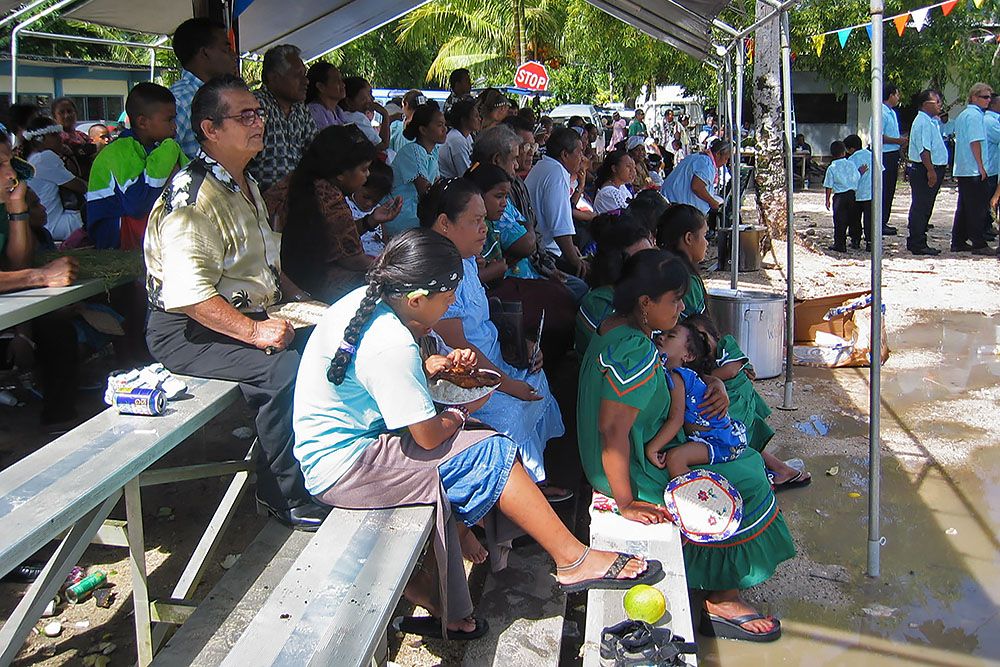
What else is there to see and experience on Kosrae?
We visited Kosrae during our tour of Micronesia mainly to experience Christmas. But on this beautiful island in Micronesia, there is, of course, much more to see and do.
Natural attractions
Kosrae offers pristine natural beauty. The island boasts pearl-white beaches along crystal-clear waters, perfect for a relaxed day by the sea. Deep in the heart of the island, you’ll find a lush rainforest, intersected with hiking trails leading to hidden waterfalls and breathtaking views.
Nature lovers can indulge in the unique YELA Ka Forest. Here, rare tree species and colourful bird species find their home. The YELA Ka Forest is the last remaining forest of Terminalia Carolinensis in the world.
Kosrae’s coastline is characterised by extensive mangrove forests, best explored by canoe or traditional outrigger canoe. These trips offer an intimate look at the delicate ecosystem of the UNESCO-recognised Utwe/Walung Marine Reserve. Underwater, you’ll find vibrant coral reefs and rich marine life.
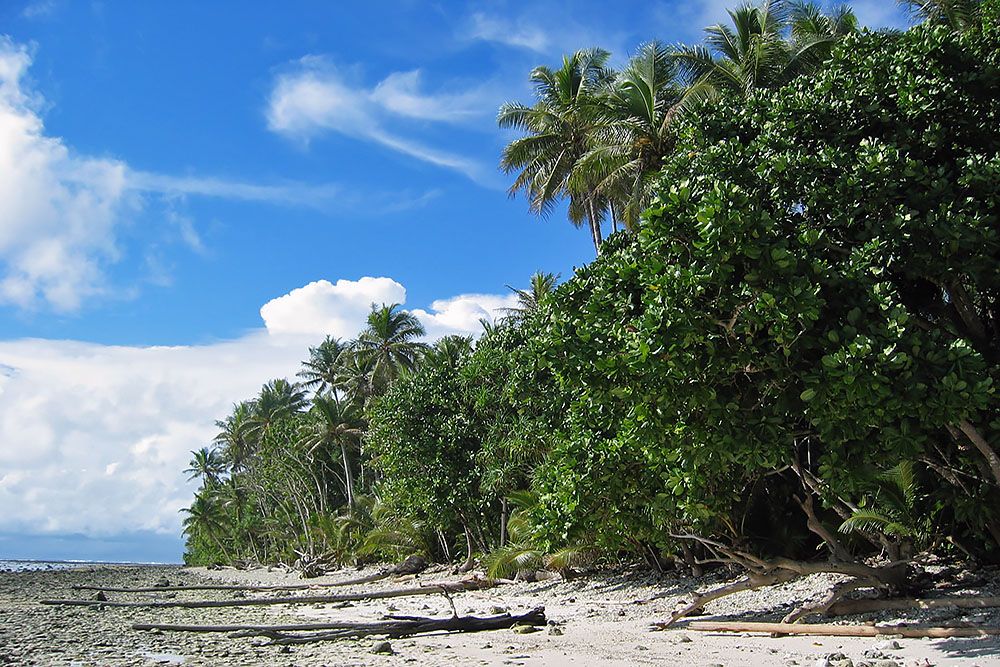
Cultural attractions
For such a small island, Kosrae has a fascinating cultural wealth. For instance, the island is home to the impressive Lelu ruins, once the centre of a powerful kingdom. The ruins invite exploration of ancient stone structures and mysterious royal tombs.
In the Kosrae Museum, you can delve deeper into the island’s history. Here, artefacts and stories bring the unique Micronesian culture to life. Then stroll through picturesque villages. Here you can observe, among other things, the skilled weaving craftsmanship of local artisans. They create the most colourful bags and mats from pandanus leaves.
The church plays a central role in island life. A visit to a Sunday service therefore offers an interesting insight into the strong sense of community. But the real highlight of the cultural calendar is the annual Christmas celebration, with its lively marches and colourful costumes. The Christmas celebration on Kosrae is the unique fusion of Christian and local traditions.
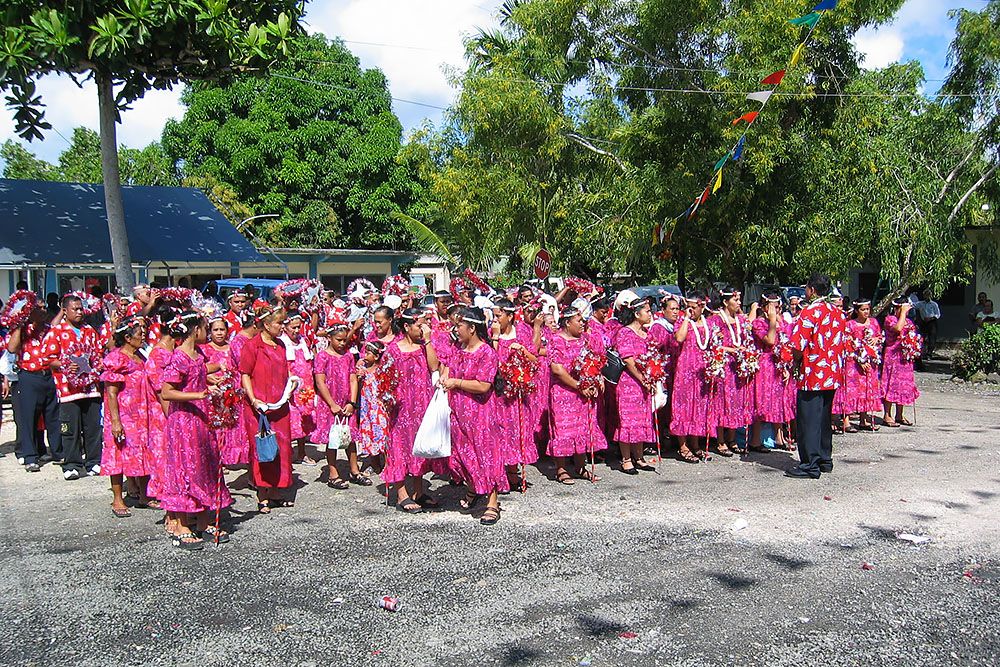
What to do on Kosrae
We mainly did a lot of diving on Kosrae. The vibrant coral reefs and the particularly varied underwater world lend themselves perfectly to both diving and snorkelling. The nice thing about diving on Kosrae is that you’re almost the only one there. This certainly benefits the quality of the coral reefs! We found the dive sites themselves slightly less spectacular than on Chuuk or Palau. These islands are home to many impressive shipwrecks from World War II. Nevertheless, we found diving on Kosrae definitely worthwhile.
Furthermore, you can take beautiful walks on Kosrae. The lush rainforest offers a variety of hiking trails, from easy coastal walks to challenging mountain treks. A popular route leads to the Sipyen waterfall. After the journey through the jungle, you can take a refreshing dip here. Another walk is the Mt. Oma Trail. This trail not only offers beautiful views but also leads past historical remains from World War II. For nature lovers, a walk through the unique YELA Ka Forest is a must. Here you can admire rare tree species and various bird species.
Of course, on an island like Kosrae, you can also take to the water. You can enjoy canoeing here and explore the coastline and mangroves this way. Additionally, you can sail with an outrigger canoe through the mangrove of the Utwe/Walung Marine Reserve. This is the first reserve in Oceania to be listed by UNESCO. The trip is organised by various providers.
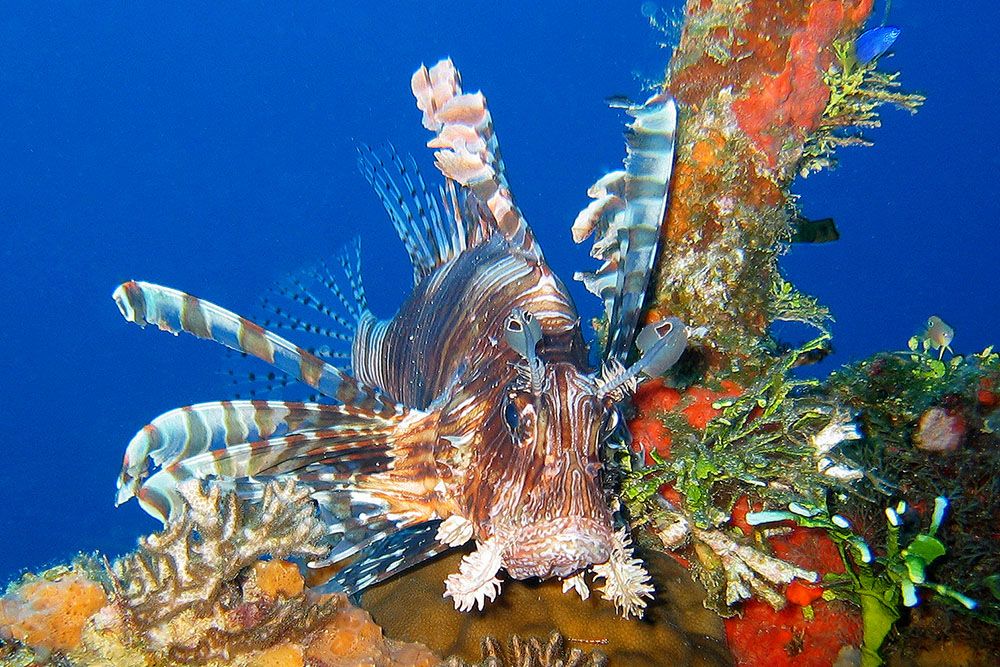
Answers to practical questions about Kosrae
Kosrae is an island in the Federated States of Micronesia, situated in the western Pacific Ocean. It is the easternmost island of the Caroline archipelago and lies approximately 600 kilometres north of the equator. Kosrae is positioned between Guam and Hawaii, with its nearest neighbours being Pohnpei to the west and the Marshall Islands to the east. The island's relative isolation contributes to its unique culture and natural beauty.
There is essentially only one way to travel to Kosrae: by aeroplane.
- From Europe: Fly via Manila (Philippines), Seoul (Korea) or Tokyo (Japan) to Guam, and then take a flight to Kosrae.
- From Australia: Take a flight from Brisbane to Kosrae.
- From the United States: Travel via Honolulu or take a direct flight to Tokyo and then travel via Guam.
On a special note: United Airlines offers a discounted "Visit Micronesia" fare. This includes up to five stops within 30 days for travel to Palau, Micronesia, the Marshall Islands and other destinations. Contact a travel agency or call United Airlines and mention the tour code VMICR.
The best time to visit Kosrae is from late December through March. This period coincides with the driest season in Micronesia, although rain can still occur regularly.
If you want to go to Kosrae for diving, June through August are the best months. November through February are the best months for surfing and kitesurfing. And if you want to experience a truly special, cultural event? Make sure you're on the island for Christmas. The Christmas celebration on Kosrae is truly unique in this world!
There are several ways to move around the island. You can hire a car to explore the island at your own pace. The island is small, so you can easily drive around the entire island in a few hours. Various hotels and local businesses offer car hire.
Another transport option is the taxi. Although taxis are not as common as in larger cities, they are available on Kosrae. Handy for short trips or if you don't want to hire a car.
For shorter distances, especially within villages or along the coast, walking is a pleasant option. Some accommodations also offer bicycle hire. Certainly a fun and environmentally friendly way to explore the surroundings!
Furthermore, many hotels offer shuttle services for their guests. This applies particularly to transfers to the airport and trips to popular attractions.
We visited Kosrae during our tour of Micronesia mainly to experience Christmas. The Christmas celebration on Kosrae is truly unique in this world! But on this beautiful island in Micronesia, there is, of course, much more to see and experience.
Natural attractions
- White sandy beaches: enjoy the pristine beaches and crystal-clear waters.
- Mangrove forests: explore the unique ecosystems and spot various animal species.
- YELA Ka Forest: visit the last remaining forest of Terminalia Carolinensis in the world.
- Sipyen waterfall: admire this nine-metre high waterfall surrounded by lush greenery.
- Utwa-Walung Marine Park: discover rare tree species and observe the rich marine life.
Cultural attractions
- Lelu ruins: explore this fascinating archaeological site of an ancient city.
- Menka ruins: view the basalt walls and ancient living quarters.
- Japanese command post: a historical site from World War II along the Oma hiking trail.
- Kosrae Museum: learn more about the island's history and culture.
- Traditional crafts: Get acquainted with local weaving, woodcarving and canoe construction.
- Giant Clam Farm: visit this farm dedicated to the conservation of giant clams.
- Culinary experiences: taste local dishes with fresh fish, taro and breadfruit.
Activities
- Diving and snorkelling: discover the vibrant coral reefs and particularly varied underwater world.
- Hiking: follow paths leading to beautiful mountain views and historical locations.
- Bird watching: observe rare bird species such as the Dusky White Eye.
- Canoeing: explore the coastline and mangroves by canoe.
- Sailing with an outrigger canoe through the mangrove of the Utwe/Walung Marine Reserve. This is the first reserve in Oceania to be listed by UNESCO. The trip is organised by various providers.
Kosrae offers a variety of eateries where local flavours are combined with international cuisine. The restaurant at the Kosrae Nautilus Resort is an excellent option. Both Western and local dishes are served here, both indoors and by the pool. They pride themselves on using locally grown organic produce and offer the best pizza in Micronesia alongside fresh fish and breadfruit chips.
For those seeking authentic local flavours, Bully's restaurant is known for its excellent fish dishes. Inum restaurant offers a different menu every evening with both international and local dishes. The Awane restaurant is another recommendation for a good meal.
When exploring Kosrae's cuisine, don't miss the chance to try the incredible variety of tuna dishes. From grilled fish and sandwiches to saipok, burgers and sashimi, tuna is a staple of the local diet. Other local delicacies you must try include lumpia rolls, mangrove crabs and sour pork.
Soup lovers will enjoy the island's famous Sunday soup, made with tuna and coconut cream, and the egg-vegetable soup with salmon noodles. These local specialities are often available at affordable prices from food stalls and local shops.
Kosrae offers several excellent accommodation options, ranging from dive resorts to hotels. The following accommodations receive good reviews:
- Kosrae Nautilus Resort: this 3-star accommodation is highly rated by guests. It is located in Lelu, about 20 minutes from the airport. The resort features air-conditioned rooms, free WiFi and a private bathroom. The resort also offers excursions, airport transfers and has an on-site restaurant.
- Island Hopper Hotel: this 3-star hotel is located in Finanpes, Lelu, just 10 minutes from the airport. It has an exceptionally high rating from guests. The hotel offers modern rooms with air conditioning, fast WiFi and comfortable beds. They offer various services including airport shuttles, car hire and adventure tours.
- Senny's Treelodge: this accommodation is located in Lelu, about 20 minutes from the airport, and offers a unique stay experience. It features air-conditioned rooms, WiFi and a private bathroom. They also provide airport transfers and kayaking opportunities.
- Hilltop Hotel: this 5-star hotel in Yepan offers free WiFi and free private parking. It is one of the more luxurious options on the island.

